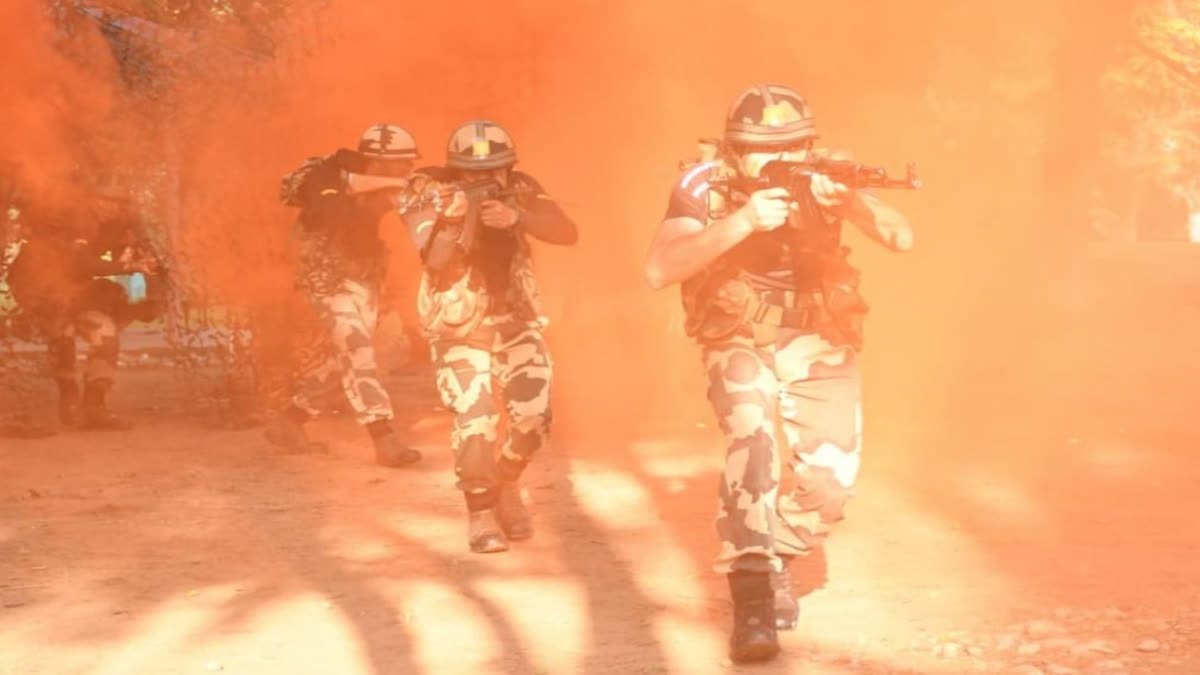Kolkata: The BSF, which has been tasked with guarding the 4,096 km India-Bangladesh border on the eastern region, is working in an action to ramp up security around the waters in West Bengal's Sunderbans bordering Bangladesh.
Under the initiative, a marine battalion comprising more than 1,100 personnel, a squadron of about 40 drones and all-terrain vehicles (ATVs) will be engaged to secure the strategic Sundarbans mangrove region along the India-Bangladesh border against smuggling and infiltration.
The blueprint of the plan has been prepared by the Eastern Command of the border force based in Kolkata and a final approval and financial sanction from the Union Home Ministry in Delhi is awaited, officials said.
The Sundarbans, the world's largest mangrove forest cover region is an archipelago of over 100 islands and a complex network of streams, rivers, tidal creeks and channels spread over an area of 9,630 sq km in India, is crucial to the country's coastal security. The rest falls in Bangladesh.
It lies on the delta of the Ganga, Brahmaputra and Meghna rivers in the Bay of Bengal.
"Sundarbans is a strategic and vital area along the India-Bangladesh international border. Its effective domination and security is the need of the hour as there are inputs suggesting this tricky forest and riverine area could be used for cross-border infiltration of terrorists and criminals," a senior officer said.
The force has hence decided to raise an exclusive marine battalion of its personnel for this task, deploy sturdy drones that can undertake long-haul surveillance sorties and station some ATVs to access these areas for better patrolling, the officer said.
More than three floating outposts have now been built to secure the Sundarbans and prevent infiltration. Already 12 to 14 ATVS (Floating Jetties) have been deployed in various rivulets of Sundarbans to protect the delta from encroachment.
On January 26, during his meeting with BSF officials, Home Minister Amit Shah, who reviewed the security arrangements in the coastal area of Sundarbans, stressed the need for foolproof security in the area. The BSF took various measures step by step to tighten the security system on waterways. At present, the BSF carries out surveillance with the help of the coast guard through several large ships and around 50 small and large speed boats in Indian
Earlier, the Ministry of Home Affairs ordered a total of nine floating outposts in 2019 from Cochin Shipyard Limited.
Cochin Shipyard handed over three state-of-the-art ships called Seema Parhari Narmada, Seema Parhari Kaveri and Seema Parhari Sutle to BSF on Republic Day on January 26 this year. These ships, which are 46 meters long and 12 meters wide, are capable of carrying four patrolling or speed boats. The advanced mechanism allows forces to carry out surveillance by going to every corner of the Sundarbans near the border between India and Bangladesh
Another officer said the new battalion will have more than 1,100 trained personnel and about 40 large drones and 12-14 ATVs will be deployed.
The plan will be set in motion once the proposal is approved by the Ministry of Home Affairs, the second officer said.
The BSF, at present, patrols the Sundarbans area with a fleet of about 50 small and large speedboats and vessels. The vessels are called floating border outposts (BoPs).
The border force is tasked with guarding the entire 4,096 km of the India-Bangladesh border on India's eastern flank, of which 2,216.7 km lies in West Bengal. Out of this 2,216.7 km, 300 km is the riverine border in the Sundarbans.
The force has also communicated its plan to the West Bengal government seeking its nod for stationing a small team of its patrol parties (personnel on foot patrol) in Forest Department 'chowkis' located in the Sundarbans, which falls under the jurisdiction of two districts -- North 24 Parganas and South 24 Parganas.
The BSF patrol teams currently stay in the floating BoPs that constantly keep moving in the Sundarbans.
Read More:



